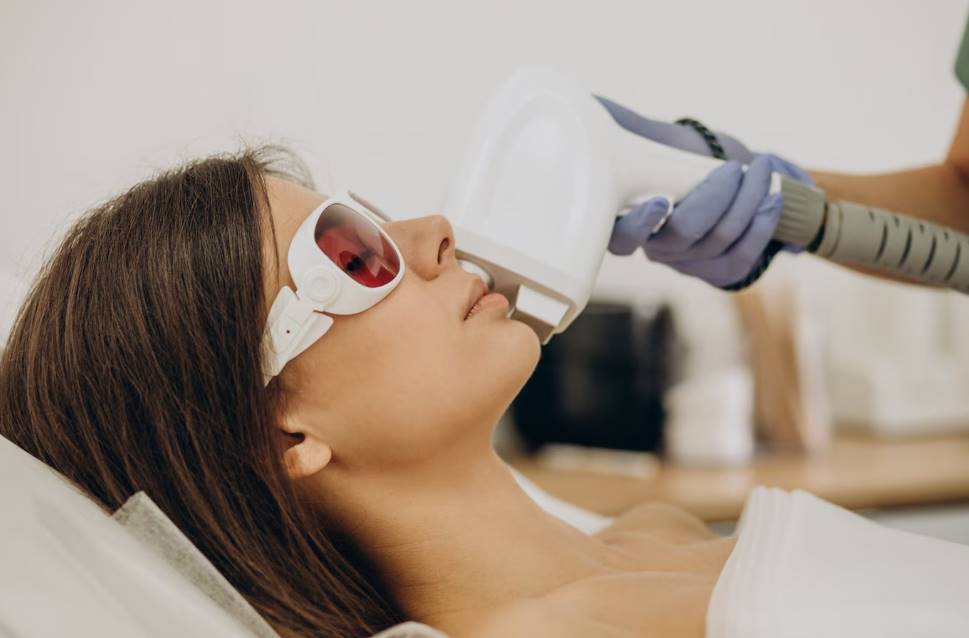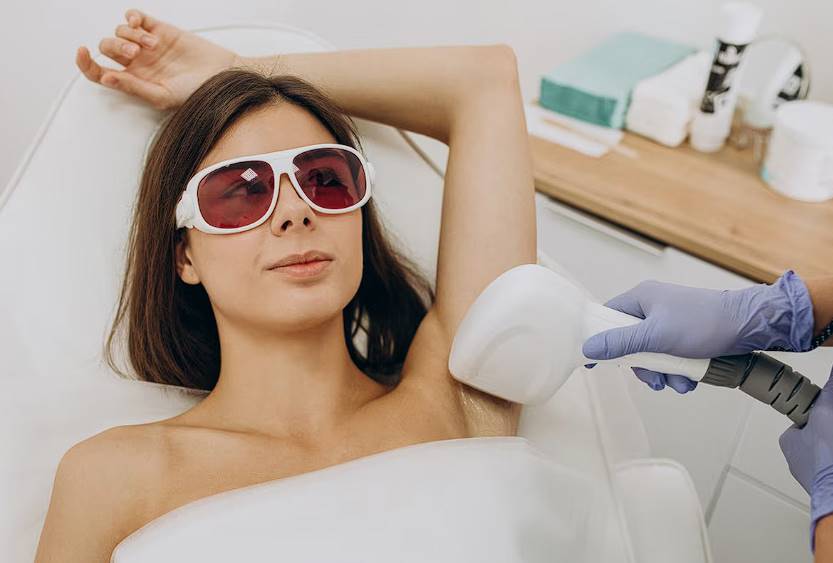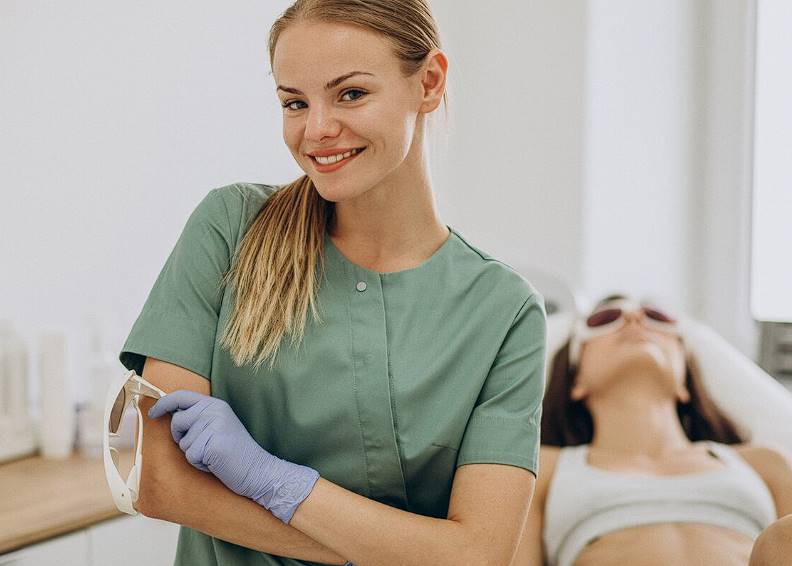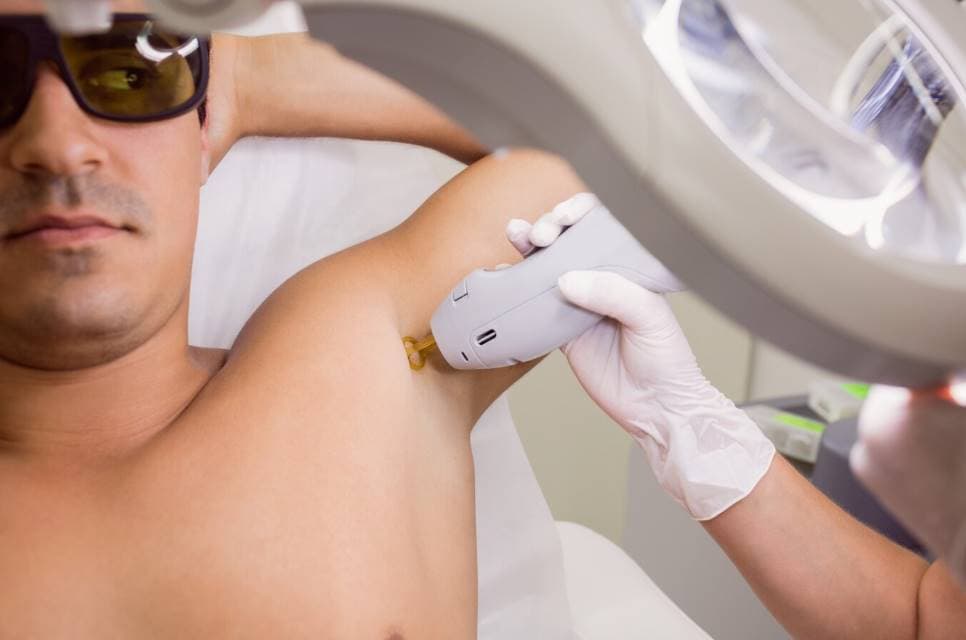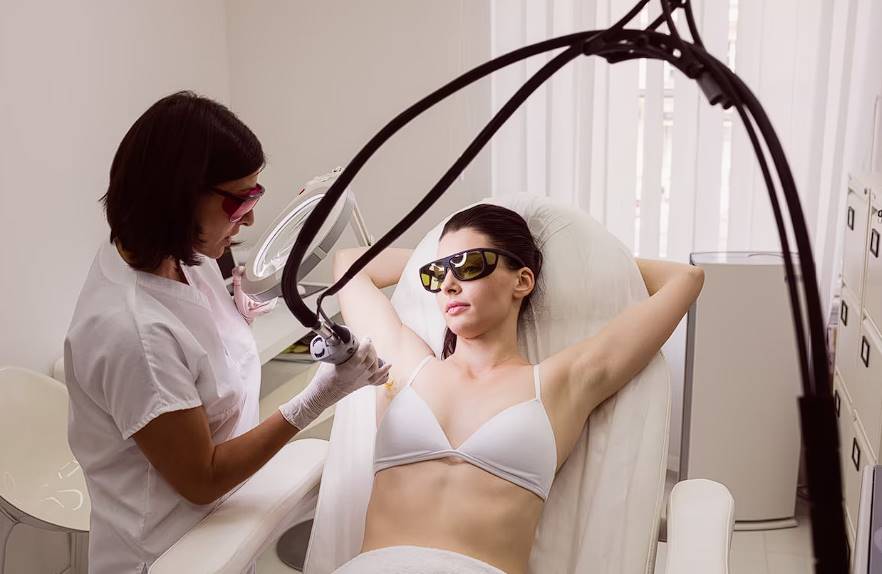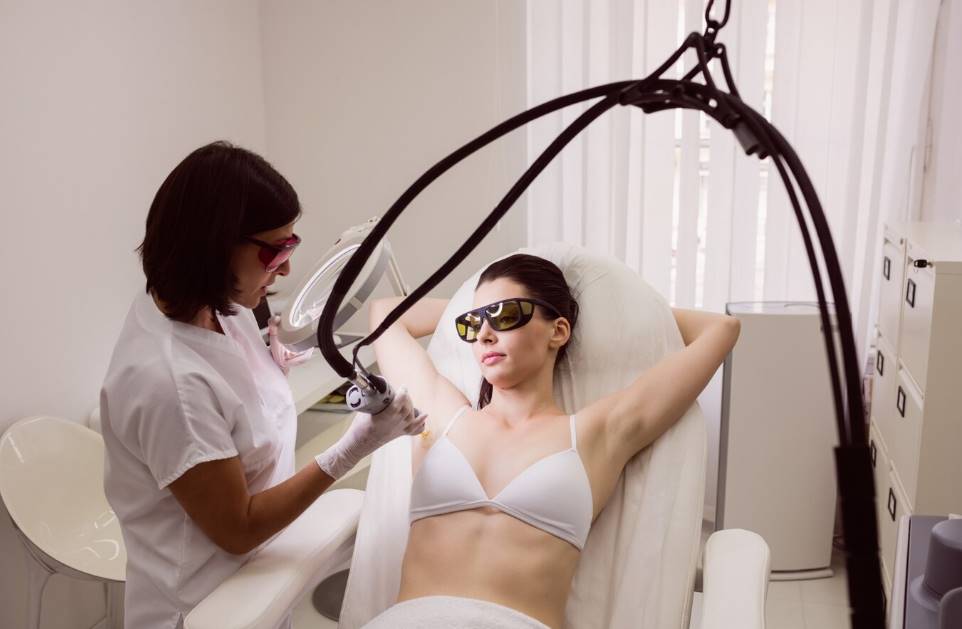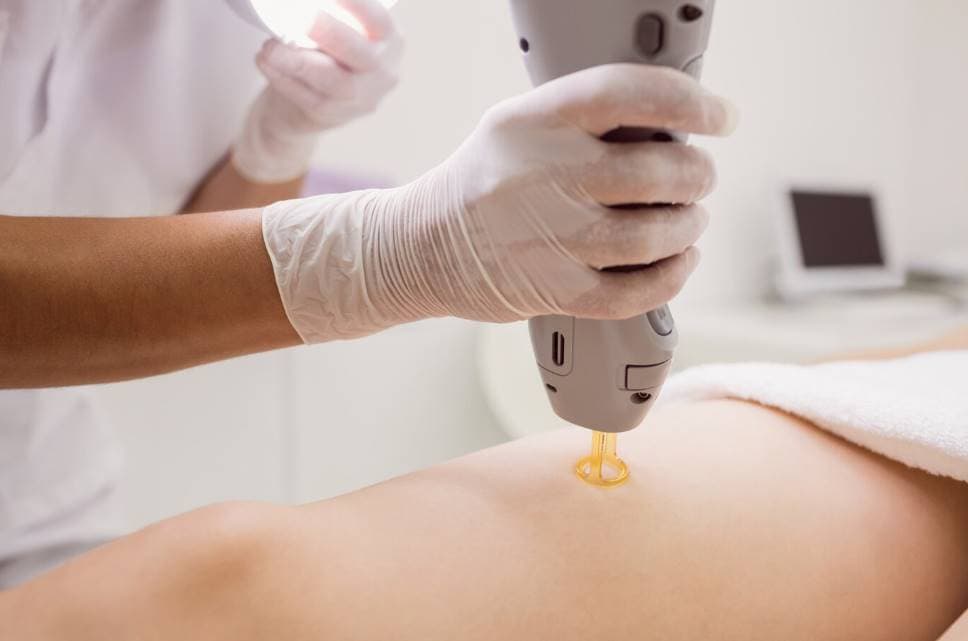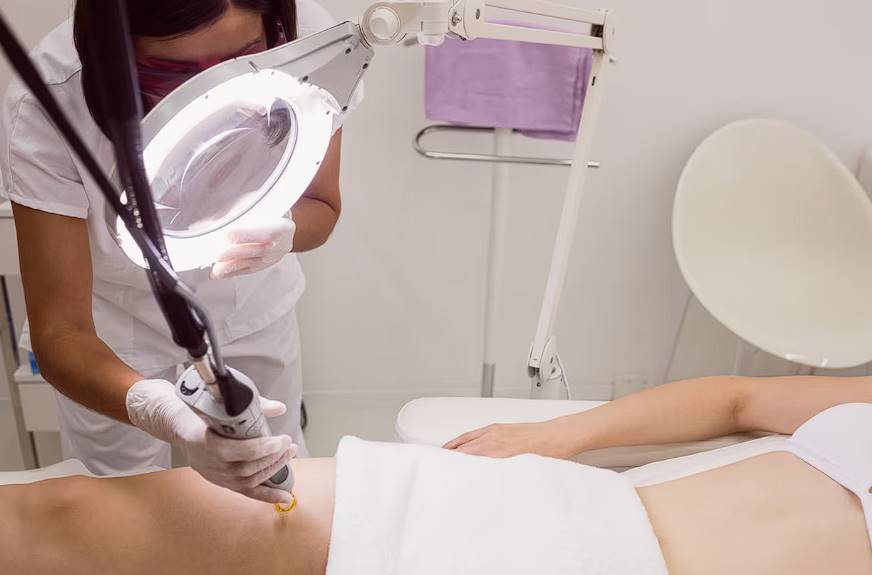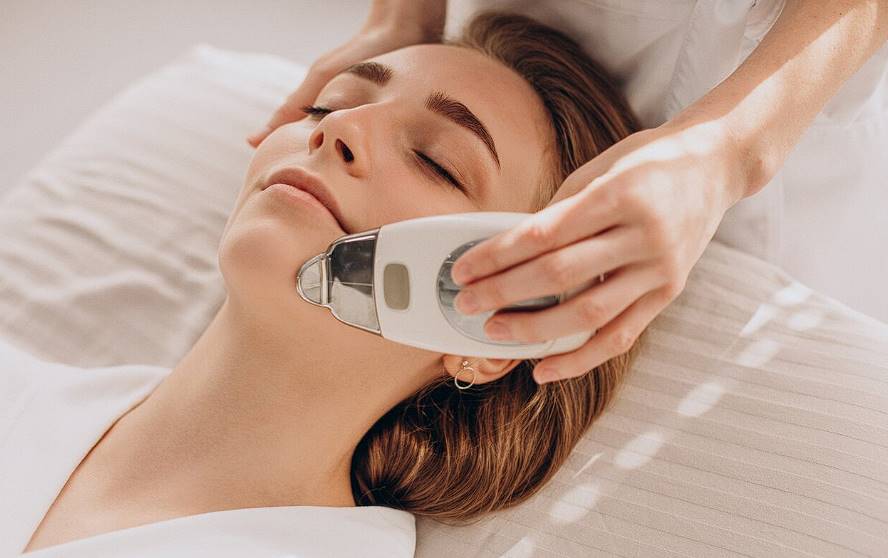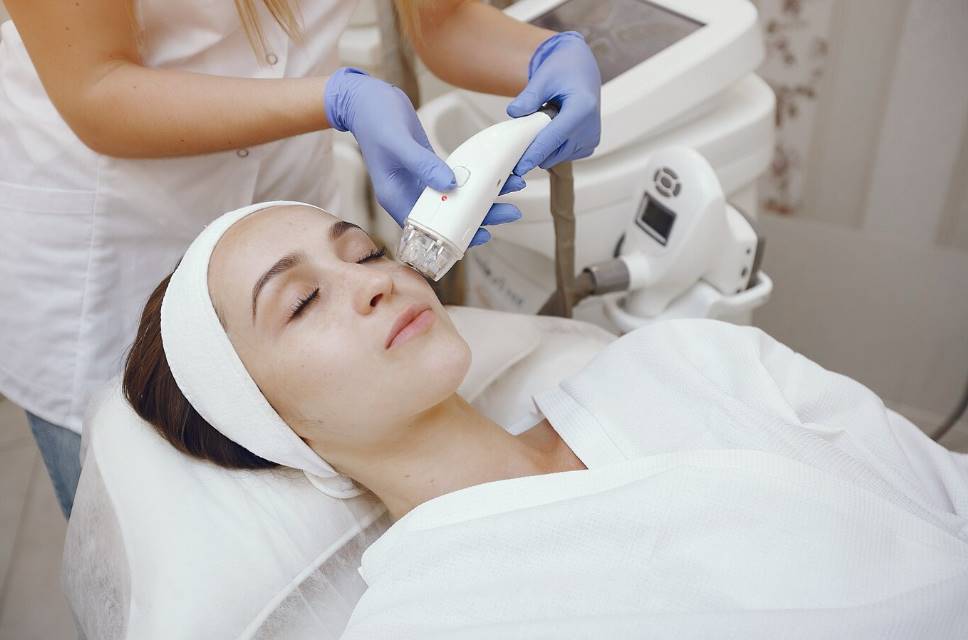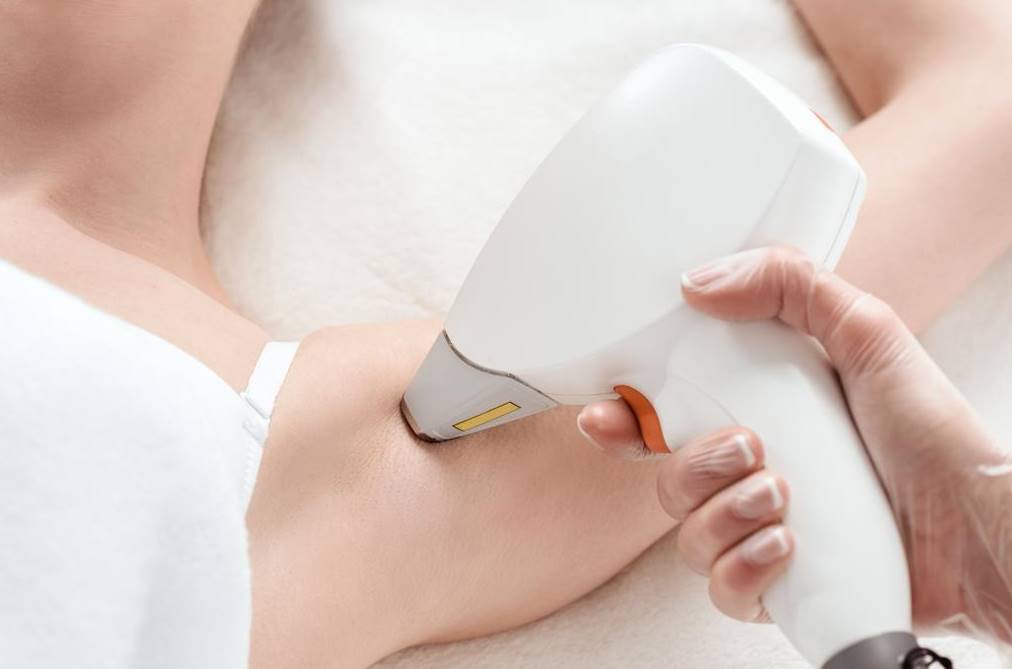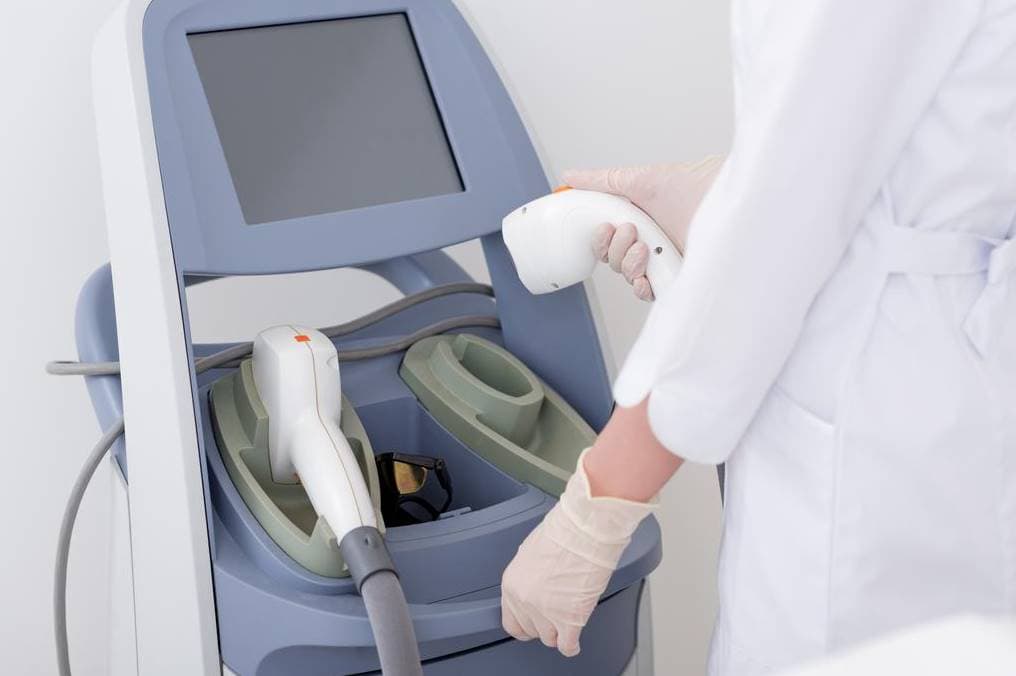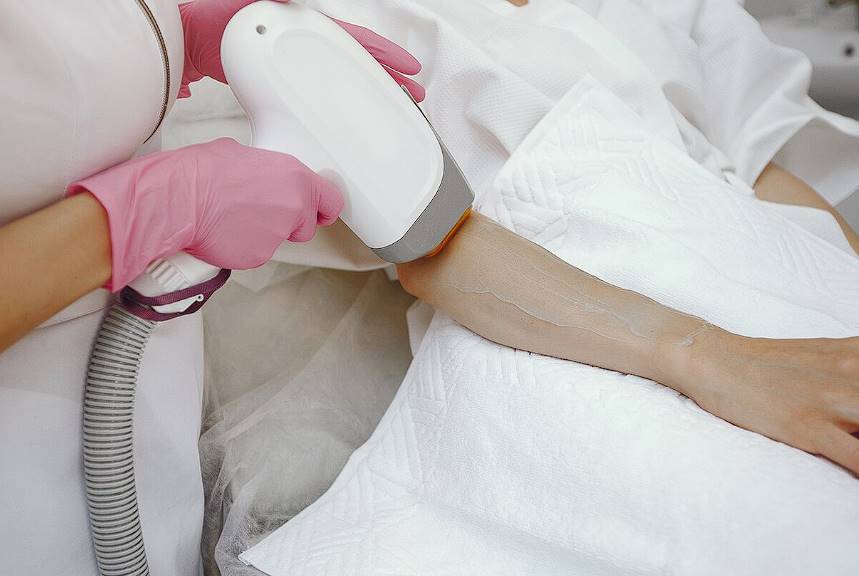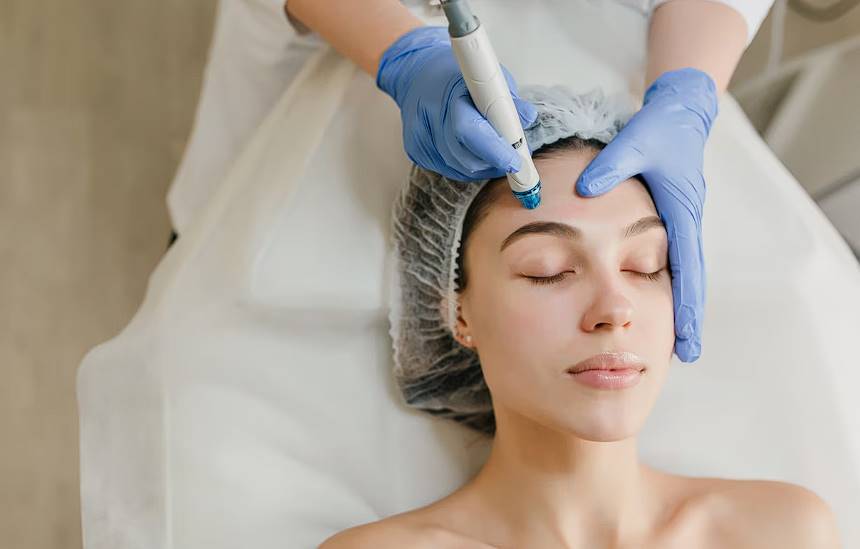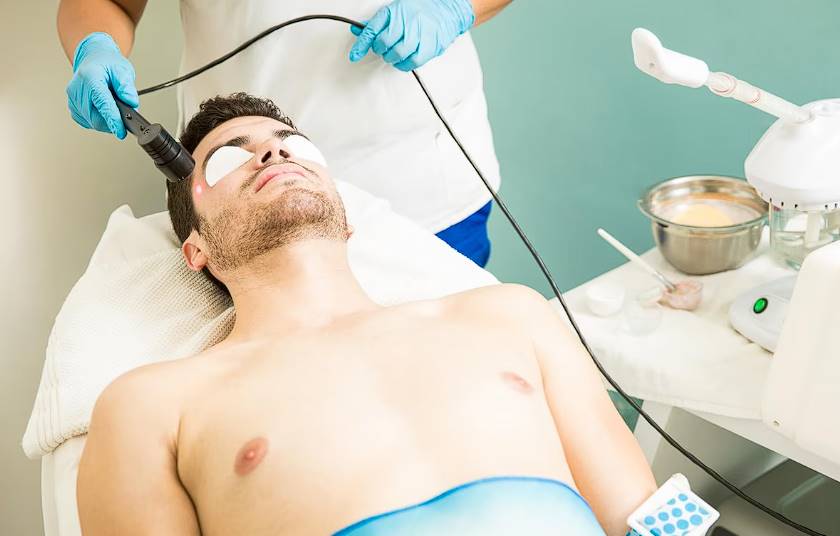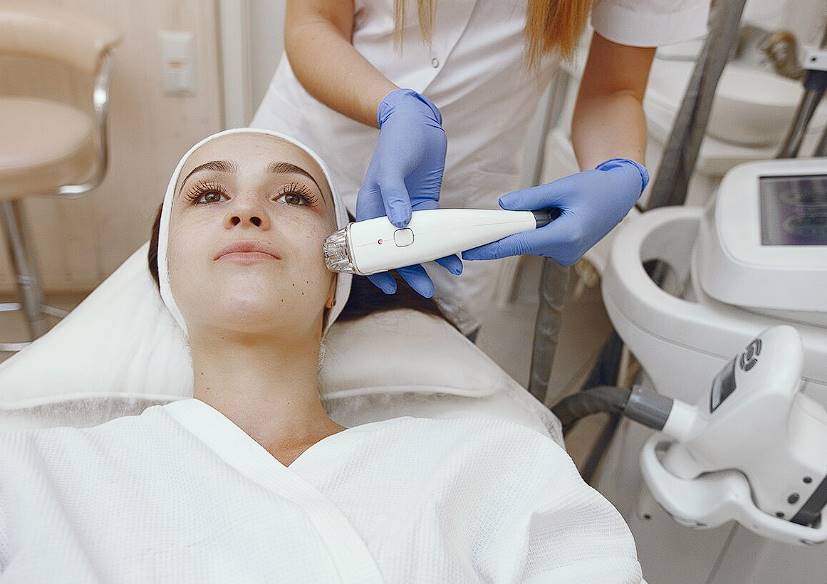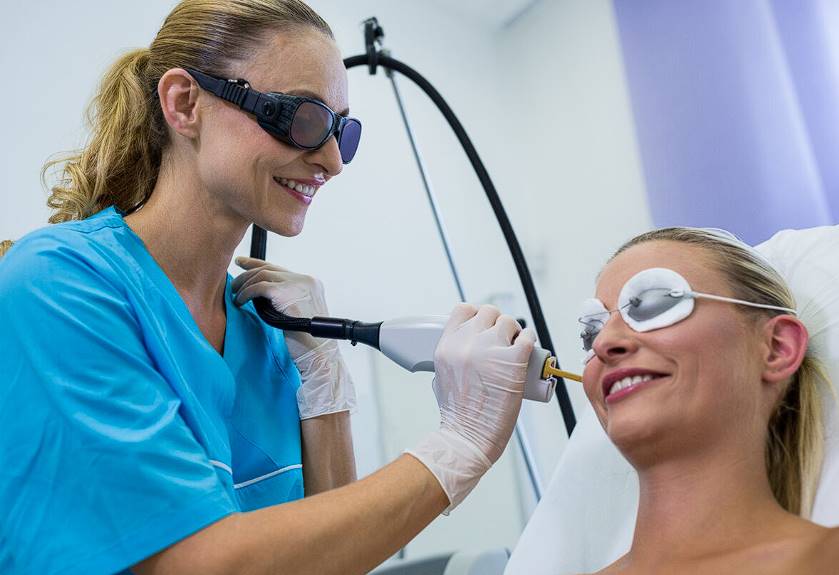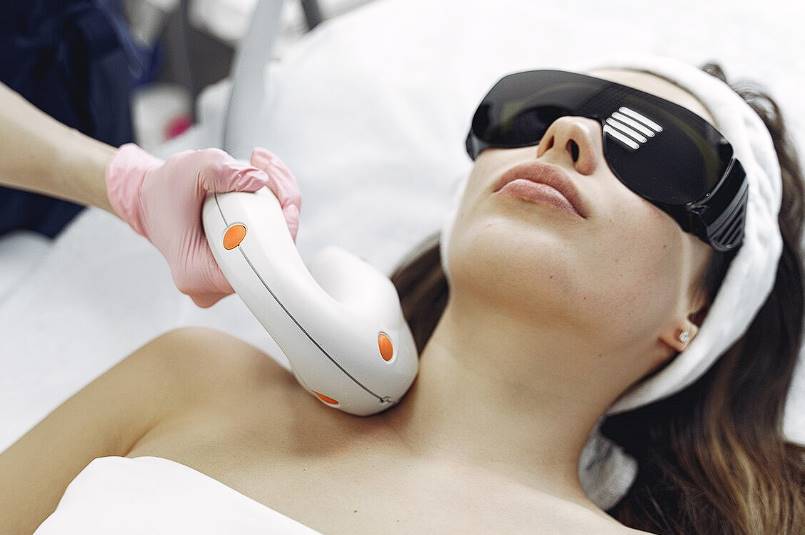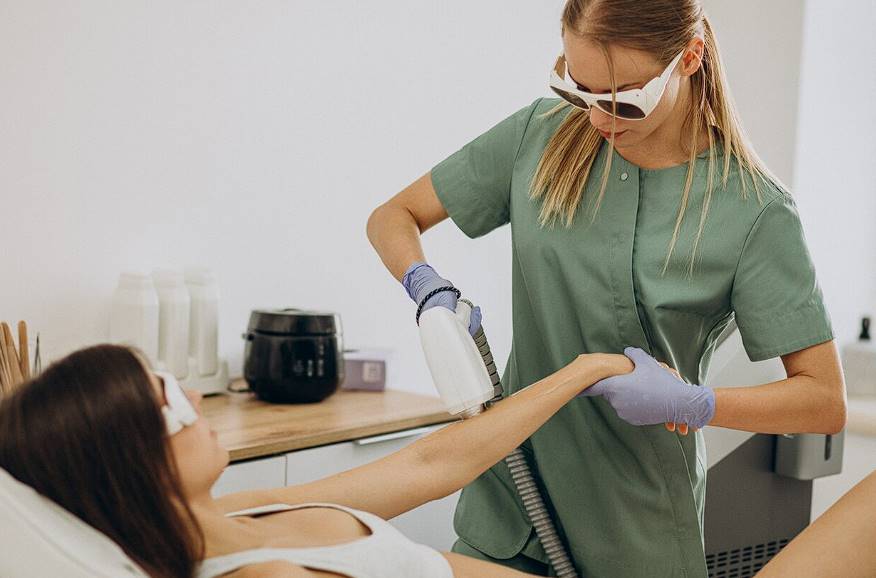Medically recognised as hyperhidrosis, excessive sweating can be annoying and difficult to manage. Those affected often experience discomfort, shame, and a lower quality of life. Laser hair removal is a promising hyperhidrosis treatment.
This revolutionary cosmetic treatment, mostly used for hair reduction, may help reduce excessive sweating. This study will examine laser hair removal, its impact on sweat production, and whether it can help hyperhidrosis sufferers. Discover the pros and cons of laser hair removal for excessive sweating.
What Is Hyperhidrosis?
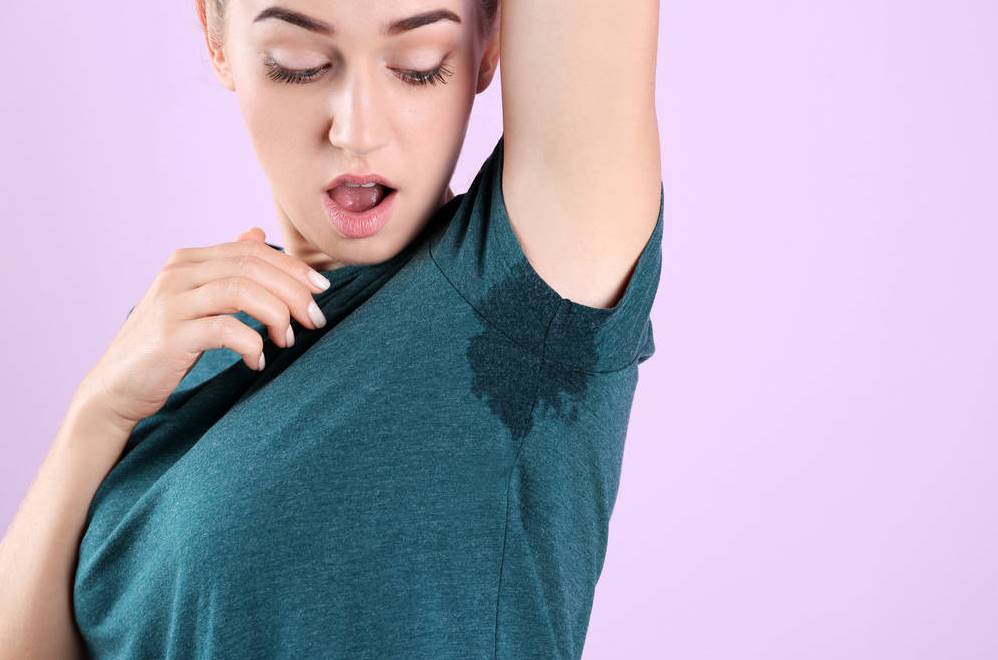
Hyperhidrosis causes excessive sweating. This occurs when you sweat more than your body needs to regulate temperature. You may sweat at repose, in cold weather, or unexpectedly.
Your eccrine glands create odourless perspiration. Sweat regulates body temperature and prevents overheating. Your skin has eccrine glands. Sweat travels through ducts from glands to skin. Sweat evaporates from the skin to cool your body after leaving the ducts.
Overworking sweat glands cause hyperhidrosis.
Types Of Hyperhidrosis
Primary Focal
Only specific bodily parts sweat more. The guy is awake. It occurs equally on both sides of the body (hands, underarms, feet).
Generalized Idiopathic
Large bodily parts sweat.
Secondary Generalized
Extensive perspiration affects the body. This may happen in the dark. Medicines or health issues like diabetes or an overactive thyroid cause this.
Overview Of Laser Hair Removal
One medical option for dealing with excess hair growth is laser hair removal, which employs a highly focused beam of light (a laser) to do the job.
In laser hair removal, the hair's pigment (melanin) is targeted by a laser's light emission. The hair follicles, which are tiny sacs the size of blood vessels, are damaged when the light energy is transformed into heat. The damage prevents or slows new hair development.
In most cases, laser hair removal can significantly reduce the rate at which hair grows back, but it does not lead to permanent hair removal. Initial hair removal with laser requires multiple treatments, and maintenance treatments may be required in the future. Laser hair removal works best on those with light complexion and dark hair, while it can be done safely on people with any skin tone.
Why It's Done
Reduce unsightly hair with laser hair removal. The thighs, armpits, upper lip, chin, and bikini line are typical treatment areas. Unwanted hair can be treated almost anywhere on the body, with the exception of the eyelid and its surrounding area. Tattooed skin is also off-limits for treatment.
The effectiveness of laser hair removal is affected by factors such as hair colour and skin type. The idea is simple: light should be absorbed by the hair's pigment rather than the skin's. The skin should be spared from the laser's wrath in favour of the hair follicle. Therefore, the optimum results occur with a contrast between hair and skin colour, specifically black hair and light skin.
Laser hair removal was previously not an option for those with darker complexion because of the increased risk of skin damage caused by the lack of contrast between hair and skin colour. Grey, red, blond, and white hair are not good candidates for laser hair removal because they do not absorb light well. Nonetheless, research into laser treatments for blonde hair is ongoing.
What You Can Expect
Two to six sessions with the laser are usually necessary to remove hair. The time between sessions will change based on the setting. Treatment may need to be repeated every four to eight weeks for places with rapid hair growth, such as the upper lip. Treatments may be spaced out to every 12-16 weeks on the back and other places with sluggish hair growth.
You will be required to wear protective eyewear during each laser treatment session. If necessary, a helper may shave the area again. In order to alleviate any pain you may be experiencing, your doctor may choose to use a topical anaesthetic.
During The Procedure
The doctor will apply pressure to your skin with a handheld laser device. A cooling device at the laser's tip or a cold gel may be utilised to shield your skin and reduce the likelihood of adverse effects.
When the laser is turned on by the doctor, the beam will go beneath the epidermis and into the hair follicles. Hair follicles are damaged by the laser's strong heat, which stops hair growth. You may experience some pain, like a warm pinprick, and the cooling device or gel may feel cold to the touch.
It may just take a few minutes to treat a tiny area like the top lip. Larger areas, such the back, may require more than an hour of treatment time.
After The Procedure
Redness and swelling are common in the first few hours following laser hair removal.
Apply ice to the region to be treated to alleviate any pain. Your doctor may use a steroid cream to the afflicted area immediately following laser hair removal if you experience any sort of skin reaction.
Sunlight and tanning beds should be avoided for at least six weeks after laser hair removal and in between treatments. Put on sunscreen every day with at least 30 SPF broad spectrum protection.
Understanding Sweat And Its Impact On Hair
Sweating is a natural way for your body to cool down by draining excess heat from the skin. While perspiration itself isn't bad for your hair, it does affect your locks in other ways.
Mineral And Salt Buildup
Sodium, potassium, and magnesium are just few of the minerals found in sweat. It is possible for salt to accumulate on the scalp and hair from the minerals left behind when sweat evaporates. Hair can become dry, brittle, and more prone to breaking when exposed to excessive amounts of salt. To maintain healthy hair, it is recommended to rinse the hair with water or use a clarifying shampoo on a regular basis to remove salt residues.
Scalp Hygiene
Sweat, grime, and oil can accumulate on the scalp through perspiration, which can promote the growth of bacteria and fungi. If not addressed, these scalp disorders can lead to irritation and itching of the scalp, which can have a knock-on effect on hair quality. Regularly washing your hair with a mild shampoo will help keep your scalp healthy and free of issues like these.
Moisture And Humidity
The sweat helps to keep the head and hair hydrated. Too much moisture, especially in humid areas, can make hair more frizzy, despite the fact that hair might benefit from some moisture. The consequences may be more pronounced for those with curly or textured hair since excess moisture can disrupt the hair's natural curl pattern and generate frizz. Using anti-frizz products or a proper hair care routine helps mitigate the impact of humidity on your hair.
Exercise And Blood Circulation
The increased blood flow to the scalp that results from exercise also benefits the rest of the body. Increased blood flow may improve hair health by delivering more oxygen and nutrients to the hair follicles. Perspiration from physical activity has an indirect effect on hair health, which is largely determined by factors such as heredity, hormonal balance, and overall lifestyle.
Stress And Hormonal Changes
Conditions that cause hair loss can be exacerbated by chronic stress, and stress in and of itself can cause sweating in stressful situations. Perspiring excessively during stressful situations may exacerbate these effects. Stress-induced hormonal disruptions can also cause temporary hair loss or thinning by interfering with the hair-growth cycle.
Laser Hair Removal As A Treatment For Hyperhidrosis
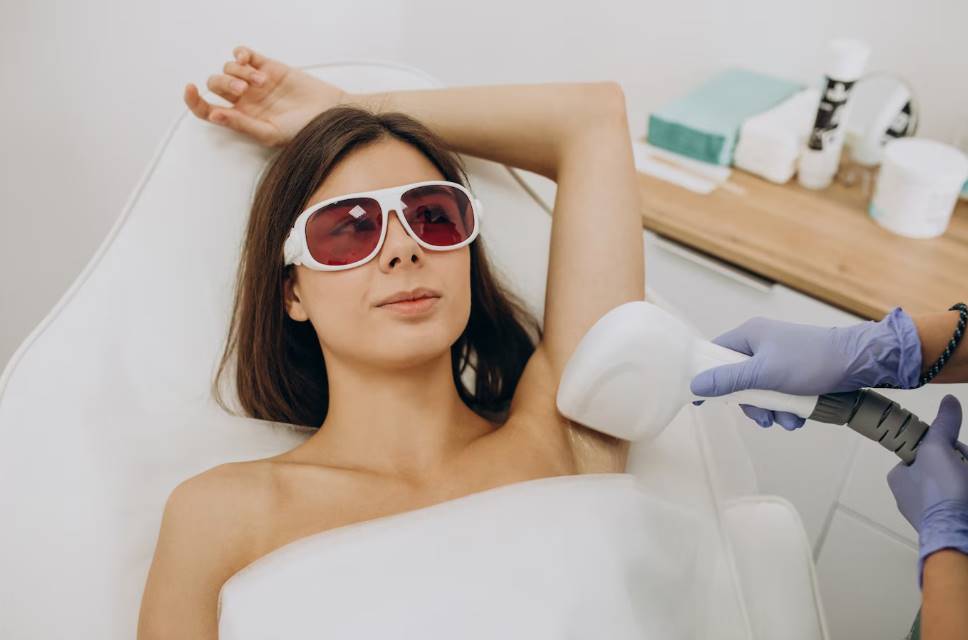
Laser therapy is commonly used for the treatment of varicose veins, as well as in the removal of skin blemishes and delicate eye surgery.
Did you know that hyperhidrosis, or excessive sweating, of the armpits, can also be treated with a laser?
A laser's ability to be focused into a small beam means it can be utilised to treat specific anatomical areas without harming adjacent tissue. This makes laser therapy an effective and precise alternative to conventional surgical methods. In addition to lowering the risk of infection, laser heat can assist stop bleeding by sealing blood vessels.
Since most laser operations may be done in a doctor's office as an outpatient procedure, patients can return home or to work shortly after treatment is completed, making them more convenient than alternative treatment options.
The sweat glands that cause underarm perspiration are located in a thin layer of tissue just under the skin of the underarms, and lasers can be used to precisely target, heat, and kill this area. In order to pass the laser instrument under the skin, tiny incisions are created in the underarms (sometimes so small that they don't even require a stitch). In most cases, the whole process takes no more than an hour.
Due to its high cost, laser technology is only available at a limited number of medical facilities. Not all medical professionals are certified to perform it, and insurance may not pay the cost. If you're interested in laser treatment, your next step should be to locate a dermatologist's practise with laser capabilities. You may find that certain treatments differ differently from others, and that there are many different laser brands to choose from.
Enquire as to the practitioner's level of education and experience with lasers, the planned course of treatment, any precautions that will be taken (such as the use of protective eyewear), any potential side effects (such as swelling, bruising, and soreness), and when you can resume your regular activities, including exercise.
Underarm hyperhidrosis can be treated with laser therapy alone, but some doctors also use suction curettage. Enquire about the method that is most frequently used by your doctor.
Conclusion
Hyperhidrosis, a medical condition causing excessive sweating, can be frustrating and difficult to manage. Laser hair removal is a promising treatment for hyperhidrosis, a condition where the body's eccrine glands produce odourless perspiration. There are three types of hyperhidrosis: primary focal, generalized idiopathic, and secondary generalized.
Laser hair removal targets the hair's pigment (melanin) using a laser beam, damaging hair follicles that prevent or slow new hair development. It works best on light complexion and dark hair, but can be done safely on people with any skin tone.
The effectiveness of laser hair removal depends on factors such as hair color and skin type. The optimum results occur with a contrast between hair and skin color, specifically black hair and light skin. Laser hair removal was previously not an option for darker complexions due to increased skin damage.
Two to six sessions are usually required for hair removal, with treatments repeated every four to eight weeks for areas with rapid hair growth and 12-16 weeks for areas with sluggish growth. Patients may experience pain during the procedure, and the treatment may take a few minutes for small areas and more than an hour for larger areas.
Following laser hair removal, redness and swelling may occur, and it is important to apply ice or a steroid cream to the affected area. Sunlight and tanning beds should be avoided for at least six weeks and sunscreen should be applied daily with at least 30 SPF broad spectrum protection. Sweat, which is a natural way for the body to cool down, can cause mineral and salt buildup on the scalp and hair, leading to dryness, brittleness, and more proneness to breaking. Regularly washing the hair with a mild shampoo can help maintain scalp health.
Sweat, grime, and oil can accumulate on the scalp, promoting the growth of bacteria and fungi. Regularly washing the hair with a mild shampoo can help maintain scalp health. Excess moisture, especially in humid areas, can make hair more frizzy, especially for curly or textured hair. Using anti-frizz products or a proper hair care routine can help mitigate the impact of humidity on hair.
Laser therapy is commonly used for treating hyperhidrosis, or excessive sweating of the armpits, as it can be focused into a small beam without harming adjacent tissue. Laser therapy can help lower the risk of infection and stop bleeding by sealing blood vessels.
However, laser technology is only available at a limited number of medical facilities and may not be covered by insurance. It is recommended to find a dermatologist's practice with laser capabilities and inquire about the practitioner's level of education and experience with lasers.
Content Summary
- Laser hair removal offers hope for managing hyperhidrosis, a condition marked by excessive sweating.
- Hyperhidrosis, also known as excessive sweating, can be a source of discomfort and embarrassment.
- This study explores the potential of laser hair removal to alleviate hyperhidrosis symptoms.
- Discover the advantages and disadvantages of laser hair removal for excessive sweating.
- Hyperhidrosis is characterised by sweating beyond what is needed for temperature regulation.
- Sweat is produced by eccrine glands and plays a vital role in cooling the body.
- Overactive sweat glands are responsible for hyperhidrosis.
- There are different types of hyperhidrosis, including primary focal and generalized idiopathic.
- Secondary generalized hyperhidrosis can be triggered by medications or health conditions like diabetes.
- Laser hair removal is a cosmetic treatment that can help manage excessive hair growth.
- Laser hair removal targets the melanin in hair follicles, preventing or slowing hair growth.
- The procedure is most effective for individuals with light skin and dark hair.
- Common treatment areas include the thighs, armpits, upper lip, chin, and bikini line.
- Laser hair removal is not suitable for tattooed skin or the eyelid area.
- The number of sessions required for laser hair removal varies, typically ranging from two to six.
- Protective eyewear is necessary during laser hair removal sessions.
- A topical anaesthetic may be used to minimize discomfort.
- Redness and swelling are common immediately after the procedure.
- Sun exposure should be avoided for at least six weeks post-treatment.
- Sweat contains minerals like sodium and potassium that can affect hair health.
- Salt buildup from sweat can make hair dry and brittle.
- Regular rinsing or clarifying shampoos can remove salt residues from hair.
- Sweat and oil on the scalp can lead to scalp issues if not addressed.
- Washing hair regularly with a mild shampoo promotes scalp hygiene.
- Excessive moisture from sweat can cause frizziness in humid conditions.
- Curly or textured hair is particularly prone to frizz from excess moisture.
- Exercise increases blood flow to the scalp, potentially improving hair health.
- Stress-induced sweating can exacerbate hair loss caused by stress.
- Chronic stress can disrupt the hair growth cycle and lead to temporary hair loss.
- Laser therapy is used for various medical procedures, including varicose vein treatment.
- Laser therapy can also be used to treat hyperhidrosis of the armpits.
- Lasers are precise and can target specific areas without harming adjacent tissue.
- Laser heat can help seal blood vessels, reducing the risk of bleeding.
- Laser treatments are often outpatient procedures, allowing for a quick return to normal activities.
- Underarm sweat glands can be precisely targeted and eliminated using lasers.
- Tiny incisions are made in the underarms to allow the laser instrument to pass.
- The entire laser treatment process typically takes less than an hour.
- Laser technology for hyperhidrosis may be limited in availability due to its cost.
- Not all medical professionals are certified to perform laser treatments.
- Insurance coverage for laser treatment may be limited.
- Consider seeking a dermatologist with laser capabilities for treatment.
- Inquire about the practitioner's education and experience with lasers.
- Discuss the treatment plan, precautions, and potential side effects with your doctor.
- Laser therapy alone or in combination with suction curettage may be used for underarm hyperhidrosis.
- Explore the various laser brands and treatment options available.
- Learn when you can safely resume your regular activities, including exercise, after treatment.
- Laser hair removal offers a potential solution to both unwanted hair and hyperhidrosis.
- Precision and minimal downtime make laser therapy an attractive option.
- Hyperhidrosis sufferers can discuss laser treatment as a viable option with their doctors.
- Careful consideration of practitioner qualifications and expectations is essential when pursuing laser therapy for hyperhidrosis.
Frequently Asked Questions
Laser hair removal is a cosmetic procedure that uses concentrated beams of light to target and destroy hair follicles, thereby reducing or eliminating hair growth in the treated area. It works by delivering controlled pulses of laser energy, which are absorbed by the pigment in hair follicles. This heat damages the follicles, inhibiting future hair growth.
Hyperhidrosis is characterized by abnormally excessive sweating. Some individuals with hyperhidrosis find that removing hair in specific areas can help reduce sweating because hair can trap moisture and contribute to increased sweat production. Laser hair removal aims to reduce or eliminate hair in these areas, potentially decreasing sweat-related issues.
While laser hair removal is primarily a cosmetic procedure, some individuals with hyperhidrosis have reported experiencing reduced sweating in treated areas. However, its effectiveness can vary from person to person, and it may not completely resolve the condition. It is essential to consult with a medical professional to determine if laser hair removal is a suitable treatment for your specific case.
Common treatment areas for hyperhidrosis with laser hair removal include the underarms, chest, back, and groin area. These areas tend to have more hair, and hair removal in these regions may have a more significant impact on sweat reduction.
Like any medical or cosmetic procedure, laser hair removal carries potential risks and side effects. These can include skin irritation, redness, temporary discomfort, and changes in skin pigmentation. It is essential to consult with a qualified practitioner who can assess your suitability for the treatment and discuss potential risks.
